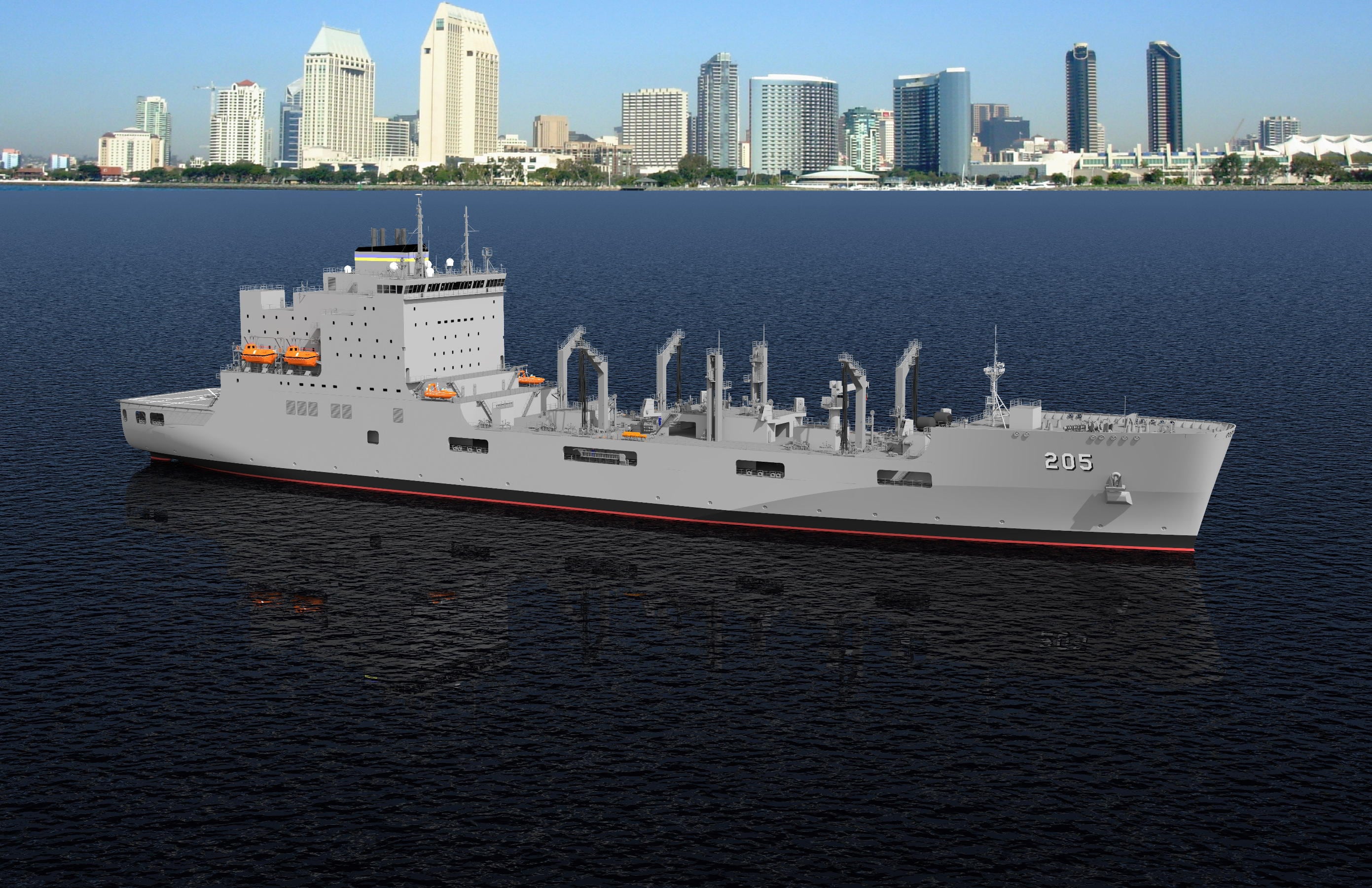The Navy on Monday marked the ceremonial keel laying of the future destroyer Daniel K. Inouye at Bath Iron Works, Maine, a destroyer that is already more than a year behind schedule.
Inouye, named for the Medal of Honor recipient and long-time Democratic senator from Hawaii, was originally slated to deliver in October of this year, according to 2015 Navy budget documents. But since then the schedule has slipped 18 months, putting Bath well behind its competitor Ingalls Shipbuilding in Pascagoula, Mississippi.
The Navy awarded two ships in June 2013 as part of the DDG restart first kicked off in 2011 with DDG-113, the John Finn. The contracts gave DDG-117, the future Paul Ignatius, to Ingalls and DDG-118, the Inouye, to Bath Iron Works.
Ingalls is currently slated to deliver Ignatius in October, about nine months later than originally projected in the Navy’s 2015 budget documents, according to the Navy’s 2019 budget submission. But Inouye isn’t slated to be delivered until April 2020, according to an April report in the Honolulu Star Advertiser, a full 18 months later than its original planned delivery from the 2015 budget submission.
A January briefing on the DDG program delivered at Surface Navy Association put Paul Ignatius at 85 percent complete to Inouye’s 42 percent.
RELATED

The delays highlight the lingering struggles at Bath Iron Works to adjust to a major realignment at the shipyard after the Navy truncated the Zumwalt class to just three ships, down from an originally planned 32, as well as restarting the DDG program there after being dormant for nearly a decade. For its part, General Dynamics says the delays have stabilized and the shipyard is in a better place moving forward.
The Navy says the lengthy delay in Inouye’s construction was mutually agreed upon between General Dynamics, Bath’s parent company, and the program office as Bath devoted resources to finishing the DDG-1000 ships, the Honolulu Star Advertiser reported in April.
The Navy and Bath Iron Works in late 2016 mutually agreed on ship schedule adjustments to better sequence the Zumwalt class and accommodate the DDG restart ships, the Advertiser reported, attributing the inputs to DDG 51 program manager Capt. Casey Moton.

The long delay in delivering Inouye highlights the difficulty inherent in resurrecting a dormant program, said Bryan Clark, a retired submarine officer and analyst with the Center for Strategic and Budgetary Assessments.
“It gives you a sense of how difficult it is to restart a program after being shut down for a long time,” Clark said. “Now, seven years on might be a little extreme, and maybe you could infer some management issues from that as compared with Huntington Ingalls. But it also highlights a lack of surge volume at Bath in their workforce and in the shipyard itself.”
Bath made alterations to its shipyard to build the now greatly diminished Zumwalt class and had to make personnel decisions geared toward a ship that is very different from the Arleigh Burke-class destroyers, Clark said. Getting the yard realigned and rehiring workers to build Burkes was a big muscle movement that contributed to construction delays, Clark said.
Bath also has fewer workers than Ingalls (Roughly 5,500 in Bath to Ingalls’ 11,500) which means they likely have more flexibility to move workers around, Clark said.
In an April earnings call, General Dynamics top executive Phebe Novakovic told analysts that Bath is “working down its learning curve on the restart DDG-51s.”
“Our learning on the hull continues nicely apace,” Novakovic said. “So that shipyard has had some issues, which we’ve talked about in the past. But we are comfortable that is largely behind us, and we’re going to continue to do well as we go forward on what are really legacy platforms for us after we got that line restarted from a dead stop.”
The yard is continuing to improve on its performance on the DDG restart, said Bath Iron Works spokesman David Hench in a statement.
“BIW is committed to continuous improvement,” Hench wrote. “We are streamlining our processes, investing in our facilities and implementing new training programs for our workforce. This focus enables us to maintain our emphasis on superior quality, improve schedule and accelerate ship over ship learning.”
Hench also pointed to the recent successful acceptance trials for the future Thomas Hudner as evidence that Bath is producing a quality product. Hudner returned from trials May 4, according to a Navy announcement.
“We completed our second DDG 51 restart ship, DDG 116, with higher acceptance trials scores for contractor-responsible items, fewer trial cards and a greater level of ship completion at the time of the acceptance trials than our first re-start ship,” Hench said.
David B. Larter was the naval warfare reporter for Defense News.







